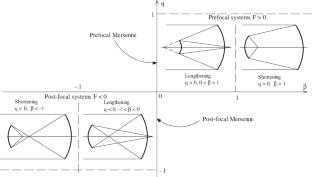Two-mirror aplanatic telescopes with a flat field
IF 2.7
3区 物理与天体物理
Q2 ASTRONOMY & ASTROPHYSICS
引用次数: 0
Abstract
A complete description is given of two-mirror telescopes with a flat medial focal surface, on which the images of stars are circles of least confusion. Particular attention is paid to aplanats, since their field of view is noticeably larger than that of classical systems. Two sets of appropriate solutions correspond to Schwarzschild and Gregorian telescopes. As a result, it becomes possible to use flat light detectors with wide-field two-mirror telescopes. New designs are of particular interest when as few reflective surfaces as possible are required, which is typical for space exploration and non-optical observations.

平面双镜无面望远镜
给出了一种具有平坦中间焦面的双镜望远镜的完整描述,在这种望远镜上,恒星的图像是最不容易混淆的圆圈。特别注意的是行星,因为它们的视野明显比经典系统大。两组合适的解对应于史瓦西望远镜和格里高利望远镜。因此,在宽视场双镜望远镜上使用平面光探测器成为可能。当需要尽可能少的反射面时,新设计特别有趣,这是太空探索和非光学观测的典型特点。
本文章由计算机程序翻译,如有差异,请以英文原文为准。
求助全文
约1分钟内获得全文
求助全文
来源期刊

Experimental Astronomy
地学天文-天文与天体物理
CiteScore
5.30
自引率
3.30%
发文量
57
审稿时长
6-12 weeks
期刊介绍:
Many new instruments for observing astronomical objects at a variety of wavelengths have been and are continually being developed. Furthermore, a vast amount of effort is being put into the development of new techniques for data analysis in order to cope with great streams of data collected by these instruments.
Experimental Astronomy acts as a medium for the publication of papers of contemporary scientific interest on astrophysical instrumentation and methods necessary for the conduct of astronomy at all wavelength fields.
Experimental Astronomy publishes full-length articles, research letters and reviews on developments in detection techniques, instruments, and data analysis and image processing techniques. Occasional special issues are published, giving an in-depth presentation of the instrumentation and/or analysis connected with specific projects, such as satellite experiments or ground-based telescopes, or of specialized techniques.
 求助内容:
求助内容: 应助结果提醒方式:
应助结果提醒方式:


